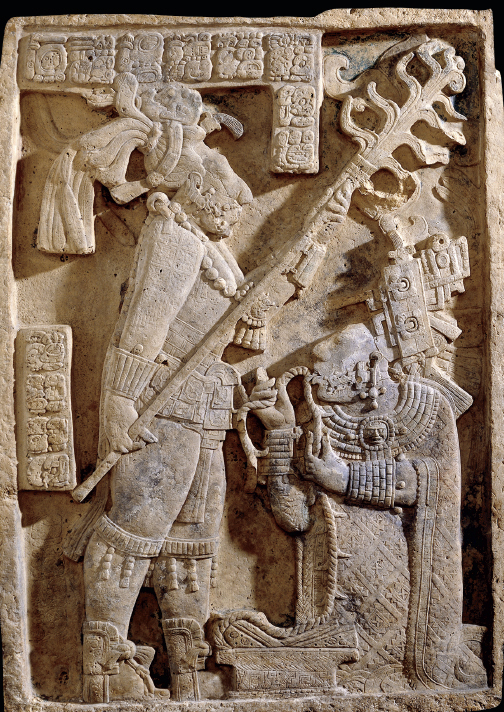Understanding World Societies:
Printed Page 309
> How did the Maya and Teotihuacan develop prosperous and stable societies in the classical era?

Palace Doorway Lintel at Yaxchilan, Mexico
Lady Xoc, principal wife of King Shield-Jaguar, who holds a torch over her, pulls a thorn-lined rope through her tongue to sanctify with her blood the birth of a younger wife’s child — reflecting the importance of blood sacrifice in Maya culture. The elaborate headdresses and clothes of the couple show their royal status. (© The Trustees of the British Museum/Art Resource, NY)
Lady Xoc, principal wife of King Shield-
IIn Mesoamerica the classical period (300 C.E. to 900 C.E.) saw major advances in religion, art, architecture, and farming, akin to those of the classical civilizations of the Mediterranean (see Chapters 5 and 6). It saw the rise of many city-